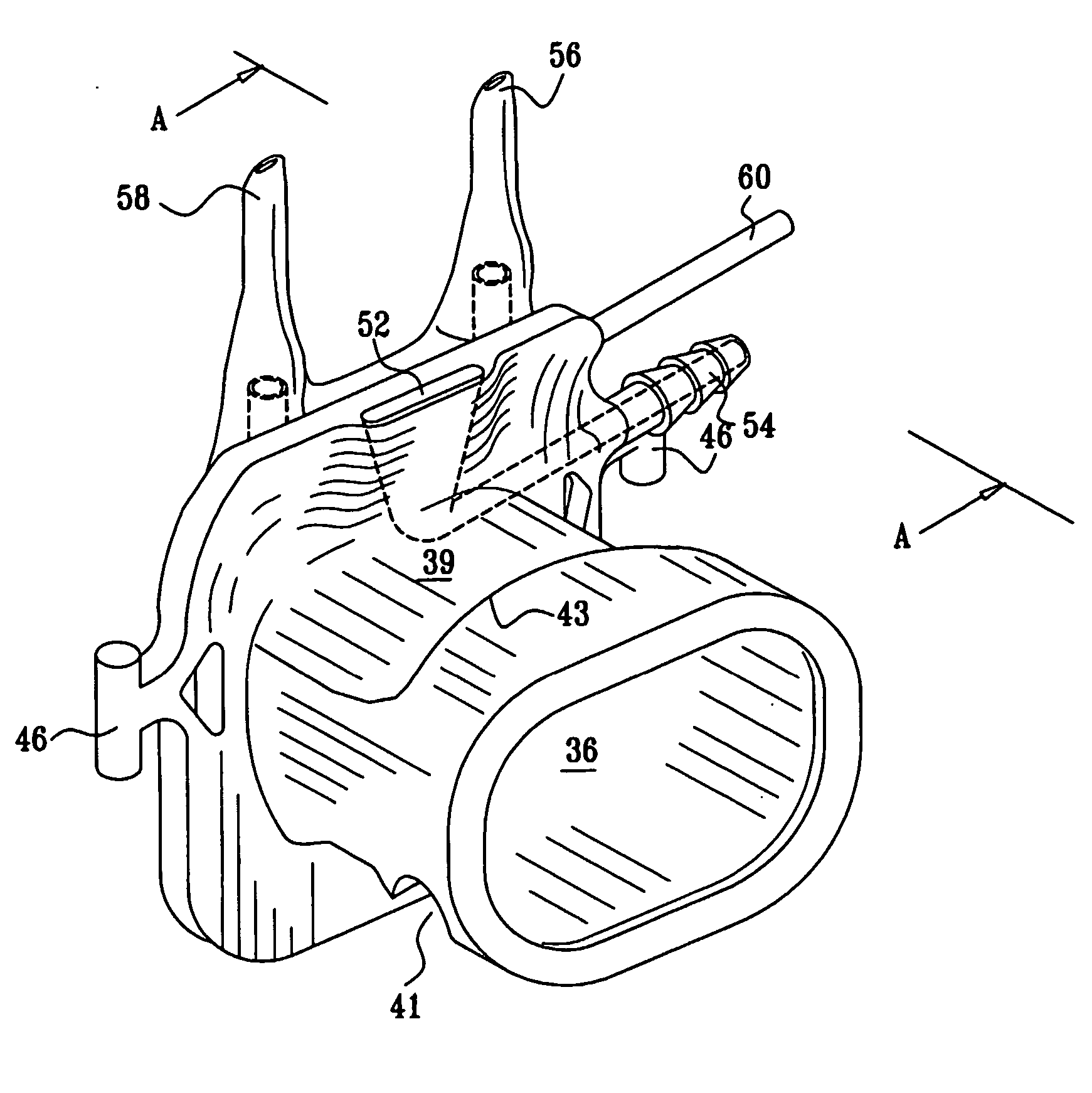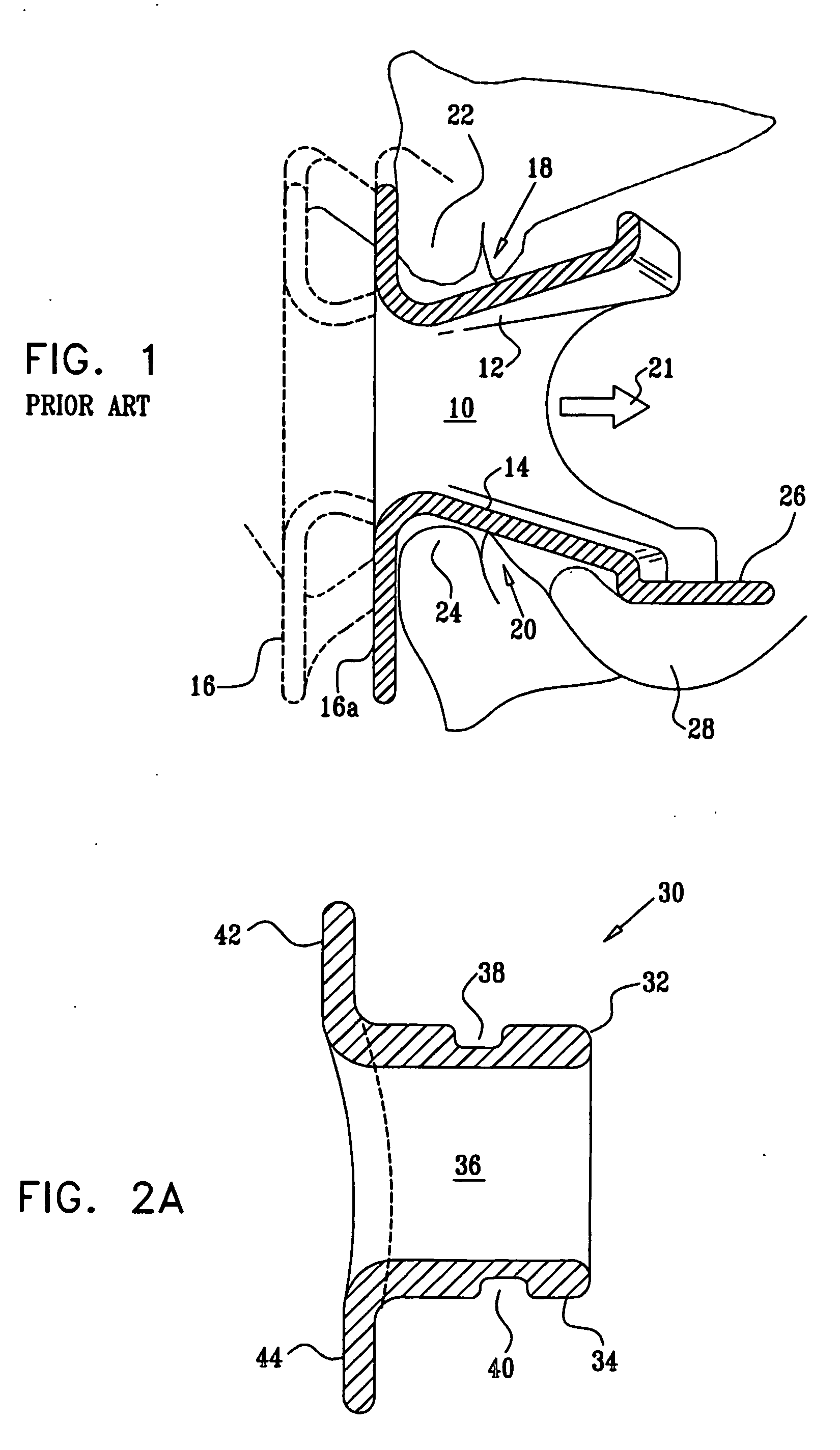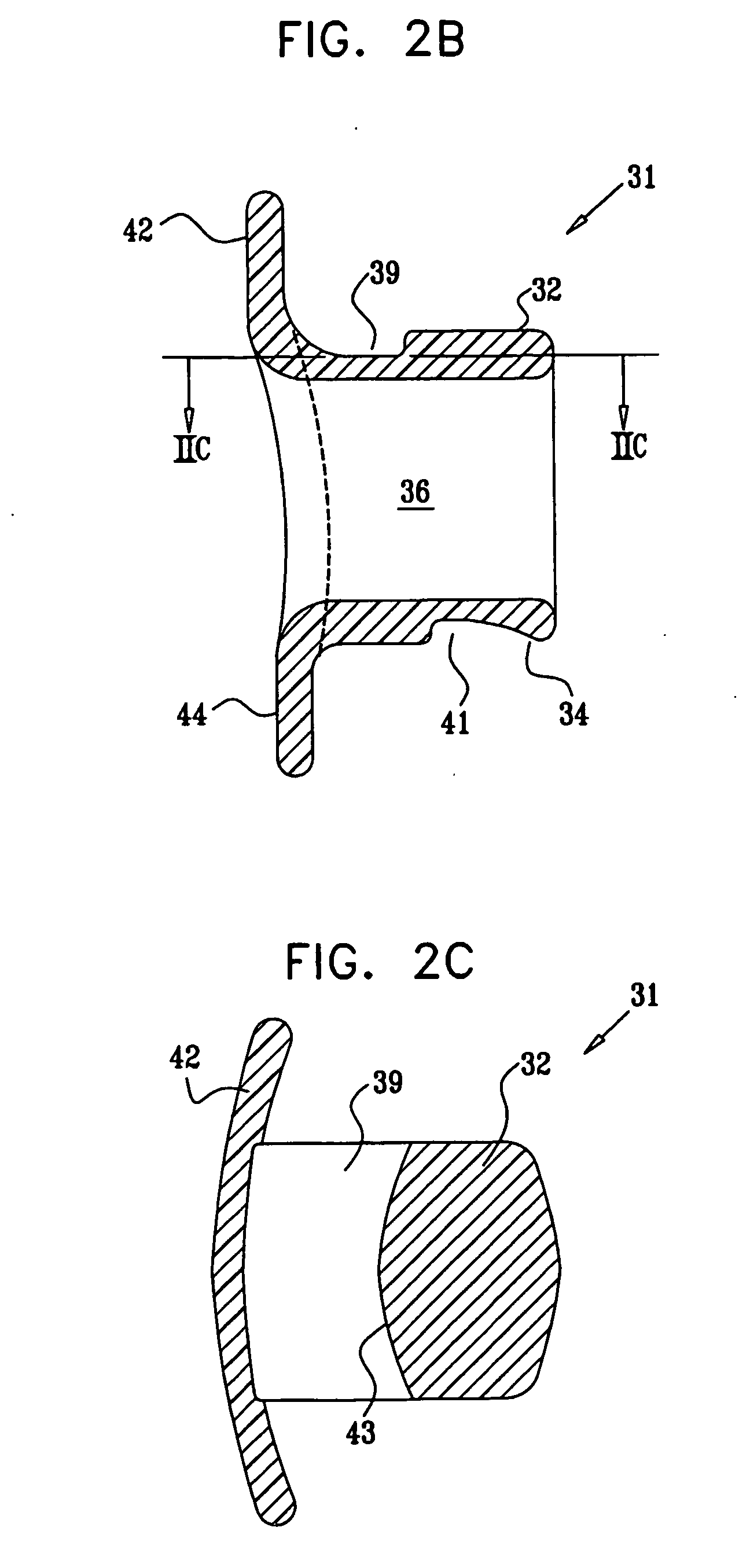Endoscopic bite block
a technology of endoscopic and bite block, which is applied in the field of bite block, can solve the problems of difficult for the subject to eject the bite block from the mouth, the upper gastro-intestinal endoscopic procedure itself, and the use of the bite block, and achieve the effect of effectively sampling the patient's breath and relieving discomfor
- Summary
- Abstract
- Description
- Claims
- Application Information
AI Technical Summary
Benefits of technology
Problems solved by technology
Method used
Image
Examples
Embodiment Construction
[0049] Reference is now made to FIG. 1, which illustrates schematically a prior art endoscopic bite block, such as that described in the above-mentioned U.S. Pat. No. 5,174,284. The bite block has an internal channel 10, with upper surface 12 and lower surface 14 inclined towards the front of the bite block, where the front plate 16 is connected. As the subject's teeth 18, 20, close, the bite block is pulled into the mouth in the direction 21 by the action of the teeth on the inclined upper 12 and lower 14 surfaces, so that the front plate moves from its initial position 16, until it is lodged firmly up against the subject's lips 22, 24, in position 16a. At the same time, the tongue depressor 26 firmly grips the subject's tongue 28, preventing it from moving.
[0050] However, the structure of the human mouth is such that the teeth positions are unlike those shown in the prior art drawing of FIG. 1, in that the upper and lower teeth do not close naturally onto each other, as shown in ...
PUM
 Login to View More
Login to View More Abstract
Description
Claims
Application Information
 Login to View More
Login to View More - R&D
- Intellectual Property
- Life Sciences
- Materials
- Tech Scout
- Unparalleled Data Quality
- Higher Quality Content
- 60% Fewer Hallucinations
Browse by: Latest US Patents, China's latest patents, Technical Efficacy Thesaurus, Application Domain, Technology Topic, Popular Technical Reports.
© 2025 PatSnap. All rights reserved.Legal|Privacy policy|Modern Slavery Act Transparency Statement|Sitemap|About US| Contact US: help@patsnap.com



